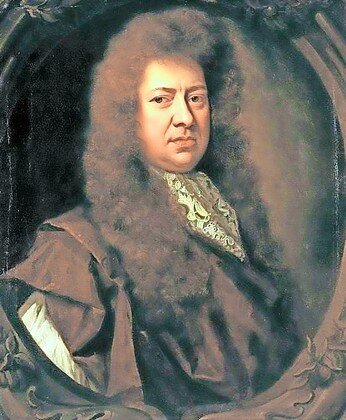For Samuel Pepys, a wild British Simchat Torah
What an irony. I always knew that the first commentary on a Sukkot machzor describing the rather sharp medieval reaction to a British-based Simchat Torah service would come from the pen of a former British chief rabbi, in this case, Rabbi Jonathan Sacks. This strange chapter in Jewish religious history, and Rabbi Sacks’ interest in it, was foreshadowed last month in an essay by the rabbi on his website entitled, “The Deep Power of Joy,” wherein he relates to us the following:
“On 14th of October 1663 the famous diarist Samuel Pepys paid a visit to the Spanish and Portuguese Synagogue in Creechurch Lane in the city of London. Jews had been exiled from England in 1290 but in 1656, following an intercession by Rabbi Menasseh ben Israel of Amsterdam, Oliver Cromwell concluded that there was in fact no legal barrier to Jews living there. So for the first time since the 13th century Jews were able to worship openly.”
In the introduction to his liturgical commentary in the Koren Sukkot Machzor, Rabbi Sacks relates the details — quoted in archaic medieval worded English, from Pepys’ diary — of a visit that Pepys made to this synagogue on Simchat Torah to witness firsthand a Jewish worship service. Pepys’ impressions are quoted at length in the machzor and, separately, in an essay by historian Dr. Eliezer Segal entitled, “Mr. Pepys’ Outrageous Outing.”
After detailing the holiday rituals he observed, Pepys’ sympathies undergo a decidedly weird deterioration and he writes:
But, L-rd! To see the disorder, laughing, sporting, and no attention, but confusion in all their service, more like brutes than people knowing the true G-d, would make a man forswear ever seeing them more and indeed I never did see so much, or could have imagined there had been any religion in the whole world so absurdly performed as this.
This quote teaches us a sober and somber lesson concerning the raucous behavior that we have come to witness on this feast.
Rabbi Sacks continues his teachings by detailing for us the historical background to Simchat Torah, including the logic behind the holiday, sans some of the craziness that has been prevalent from medieval time unto our own day.
• • •
Rabbi Sacks performed a valued service, lending an air of long overdue sobriety to this often misunderstood festival. Both Rabbi Sack’s work, and that of Dr. Segal, deserve your attention and study.
Another feature in Rabbi Sack’s Sukkot machzor is his excellent introduction and commentary to the Book of Kohelet (Ecclesiastes). Given the joyous nature of this holiday, the reading of this somber book benefits from this sober interpretation by one of this generation’s leading theologians. This feature is not some sidebar interpretation, but long overdue expansive interpretation.
“Sukkot is the time we ask the most profound question of what makes a life worth living,” writes Rabbi Sacks. “Having prayed on Rosh Hashanah and Yom Kippur to be written in the Book of Life, Kohelet forces us to remember how brief life actually is, and how vulnerable. ‘Teach us to number our days that we may get a heart of wisdom’.”
Further on we learn that, “Most majestically of all, Sukkot is the festival of insecurity. It is the candid acknowledgment that there is no life without risk, yet we can face the future without fear when we know we are not alone.
“G-d is with us, in the rain that brings blessings to the earth, in the love that brought the universe and us into being, and in the resilience of spirit that allowed a small and vulnerable people to outlive the greatest empires the world has ever known.”
This column was originally published in 2016. To reach Alan Gerber, write: Columnist@TheJewishStar.com






